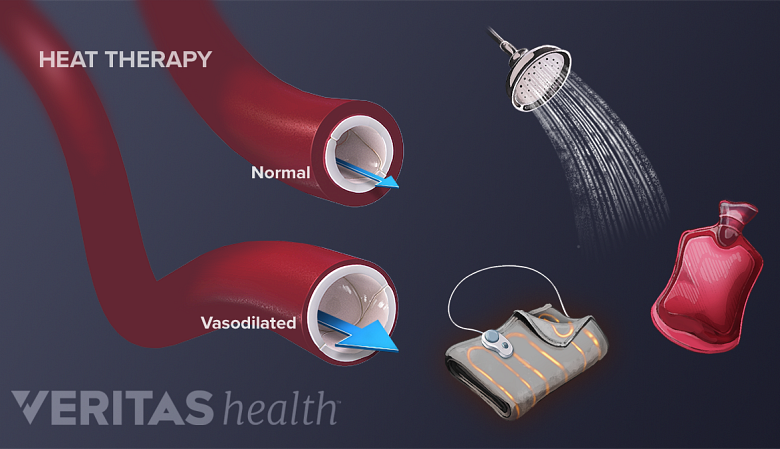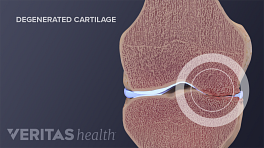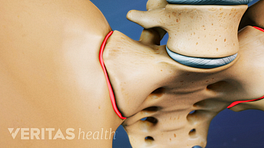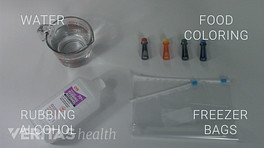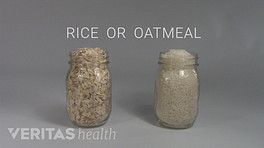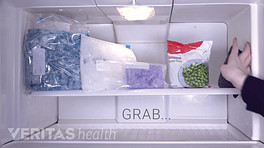Heat therapy is an easy, inexpensive, and medication-free way to relieve some types of arthritis stiffness and pain. Heat therapy can:
- Encourage the healing of damaged tissue. Warmth causes the blood vessels of the muscles to dilate, which increases the flow of oxygen and nutrients to the muscles. (Typically cartilage cannot be re-grown, but heat may aid repair to other damaged tissues.)
- Decrease joint stiffness. Warmth increases the pliability of the muscles and connective tissue, which increases joint flexibility and decreases joint stiffness.
- Stimulate joint fluid. Warming the joint, followed by gentle bending and flexing, can spur joint fluid (synovial fluid) production, which increases joint lubrication and the delivery of nutrients to joint tissue.
- Distract the brain from the pain. The comforting warmth can stimulate sensory receptors in the skin and decrease the transmissions of pain signals to the brain.
Heat therapy dilates blood vessels, which can increase the flow of nutrients and facilitate healing.
In This Article:
- Applying Heat vs. Cold to an Arthritic Joint
- When and Why to Apply Heat to an Arthritic Joint
- 9 Easy Ways to Apply Heat to an Arthritic Joint
- When and Why to Apply Cold to an Arthritic Joint
- 3 Types of Cold Packs for Arthritis
- Video: How to Make a Gel Ice Pack
- Video: How to Make an Ice Massage Applicator
- Video: How to Make a Homemade Heat Pack
For many people, heat therapy works best when combined with other treatment modalities, such as physical therapy and exercise.
See Ways to Get Exercise When You Have Arthritis
Hot vs. warm?
Heat therapy should be warm, not hot. Heat therapy should not be painful or burn the skin. In addition, effective heat therapy provides a constant temperature for an extended period of time.
How long should heat be applied?
Application time depends on where the pain is located. To be effective, the heat must penetrate down into the affected muscles and joint tissues. Too short of a session will warm only the skin and not the affected tissues.
Minor to moderate pain in joints close to the skin’s surface, such as the ankle or elbow, many only require 15 to 20 minutes of heat therapy. For more intense or deeper injuries, such as moderate to severe arthritis in the hip or lower back, sessions or 30 minutes or even longer may be beneficial.
When heat therapy is not an option
Heat is not recommended in certain circumstances. For example, heat should not be used if the joint is swollen or bruised. (In these cases, it is usually better to an ice or cold pack to reduce the swelling.)
In addition, heat application not recommended for people who have:
- Dermatitis
- Deep vein thrombosis
- Diabetes
- Peripheral vascular disease
- An open wound
- Severe cognitive impairment
People with heart disease or hypertension should consult their doctor before using heat therapy.
